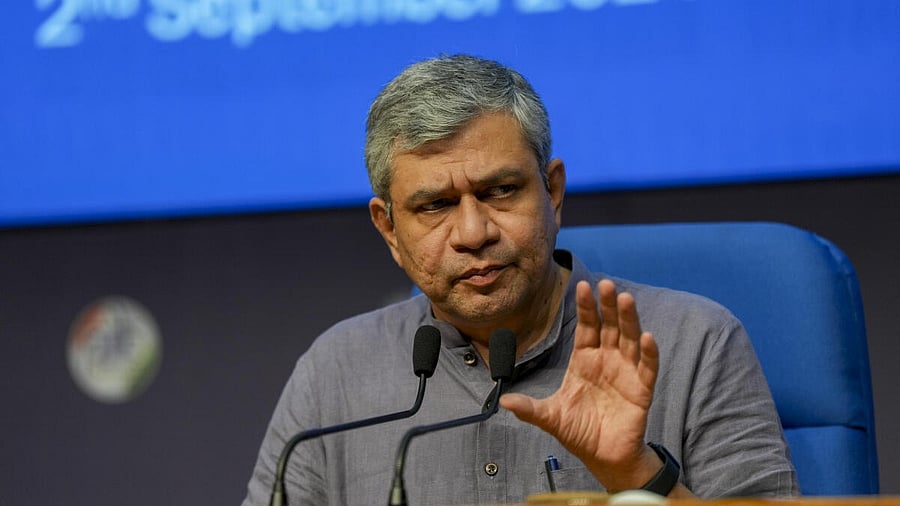
Electronics Minister Ashwini Vaishnaw.
Credit: PTI Photo
New Delhi: The Union Cabinet on Wednesday gave a nearly Rs 23,000 crore push to India’s space exploration plans by approving two deep space missions, a launch vehicle capable of taking a human to the moon and setting up of the first module of a home grown space station.
The most immediate programme will be the Rs 2,104 crore Chandrayaan-4 sample return mission, which is to be realised over the next 36 months.
This is to be followed by a Rs 1,236 crore Venus orbiter mission, scheduled to be launched by March 2028 to study the atmosphere and geology of the earth’s sister planet, which is believed to be habitable once upon a time,
A mission to establish the first module of the Bhartiya Antriksh Station has been approved by extending the ongoing human space flight programme up to March 2029 with an additional funding support of Rs 11,170 crore.
“The Next Generation Launch Vehicle, capable of carrying a 12 tonnes payload to the geosynchronous transfer orbit is to be realised over the next eight years at a cost of Rs 8,239 crore with the first flight planned by 2031,” an official said.
Once ready, the NGLV will be used to ferry an Indian to the lunar surface by 2040 as per the Indian Space Research Organisation’s roadmap.
The Chandrayaan-4 mission will involve launching two spacecraft stacks in two separate launch vehicles. The first stack will soft land on the moon, collect samples, put them in containers and lift off from the lunar surface.
The second stack, which would be revolving in lunar orbit, will collect the module with samples, hold it properly and bring it back safely to the earth.
Major technologies that are required to be realised are docking/undocking, landing and safe return to earth, besides accomplishing lunar sample collection. All of them will eventually be required for the first Indian to land on the moon.
Out of the Rs 1200 crore plus budget for Venus Orbiter Mission, around Rs 824 crore will be spent on building the spacecraft with sensors to collect data on the surface topography, Venusian dust, clouds and lightning, volcanism, atmosphere, ionosphere and solar forcing.
Among other things, the mission will study the underlying causes of the transformation of Venus.
The approval for the development of the first module of Bharatiya Antriksh Station - a dedicated space facility for microgravity experiments – has been accorded by extending the Gaganyaan programme till 2029. The roadmap is to have the entire station with five modules in space by 2035.
Development of the NGLV will do away with the ISRO’s need to depend on foreign agencies for the launch of heavy payloads as the rocket will be able to carry 30 tonnes of load to the low earth orbits and 12 tonnes to the GTO.
The NGLV will enable national and commercial missions including launch of human spaceflight missions to the BAS, lunar/inter-planetary exploration missions along with communication & earth observation satellite constellations to the LEO.
It will have three times the present payload capability with 1.5 times the cost compared to LVM3, and will also have reusability resulting in low-cost access to space and modular green propulsion systems.
